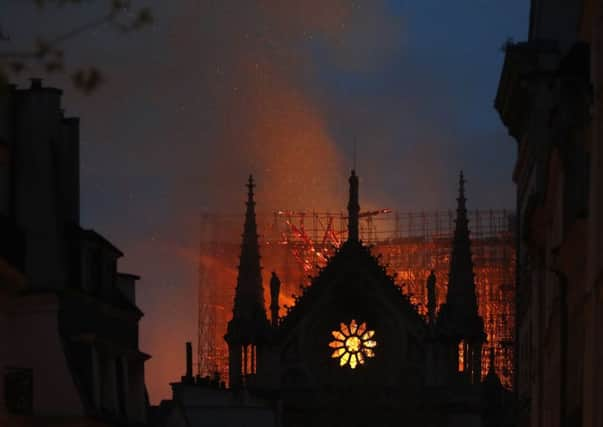Notre Dame and why we need more iconic buildings


The impact of the recent fire at Notre Dame has clearly resonated across the world. It was awful to witness those images of fire ravaging this hugely symbolic building.
Constructed over 800 years ago, the building has become a landmark destination for many visitors to the city as well as being an important place of worship for generations of Parisians.
Advertisement
Hide AdAdvertisement
Hide AdWhat struck me about the press coverage was how important such buildings are to many of us. They are landmark buildings, which define our towns and cities. The majority tend to be the great cathedrals and churches but also include town halls, country houses, civic buildings and great mills.
Such buildings will have been constructed at significant expense over a long period of time. When built, they will have made a significant visual impact to their setting, often dwarfing those buildings around them. As an architect, I can’t help feeling how they would be viewed in today’s world, where the regulatory process we have in place can be difficult to say the least.
Nevertheless, such iconic buildings and structures define the places we enjoy and inhabit. How often do we visit towns and cities across the world to see for ourselves such beautiful buildings? Their power is of huge significance both socially and economically. Without them we would be poorer.
One of the key questions raised about Notre Dame is whether to rebuild the spire as it was or to seek a new replacement. The national and architectural press is alive with views from all sides of the debate.
Advertisement
Hide AdAdvertisement
Hide AdMy own view is that it should be built in a contemporary manner of its time, yet respecting the scale, proportion and materiality of the existing building. To me this is the way that many church buildings have developed over time, with additions reflecting their age, yet in sympathy with the context.
It will be fascinating to see what appears. Either way, we will have retained and rebuilt an iconic building. My hope is that we do not lose this thread of creating major buildings in our towns and cities today and recognise that they will become the cultural focus of our communities.
One of the other major debates created by the fire has been the vast sums of money pledged for the rebuilding work. Clearly this is welcomed, though it raises the question of how such money could be used in different ways for wider community benefit.
Perhaps this is not a question for this column, but it did highlight a scheme I reviewed last week in a northern town. It was a scheme for On Side Youth Zones. The aim here is to create new buildings and places within the centre of deprived communities.
Advertisement
Hide AdAdvertisement
Hide AdThe scheme I reviewed involved the regeneration of some historic landmark buildings and linked them to some exciting new buildings. I was amazed by the vision of the project and to hear how such centres have radically transformed areas, but most importantly created a hub for the generations of the future.
It resonated immediately that such buildings would not just create landmark destinations, but also be of significant benefit to deprived communities. While they will never be in the same league as Notre Dame, they will be of huge local significance.
I hope that such initiatives are supported and encouraged and that we can continue the historic thread of creating cultural and iconic buildings in our major conurbations, which will ensure we have the landmarks of the future for the next 800 years.